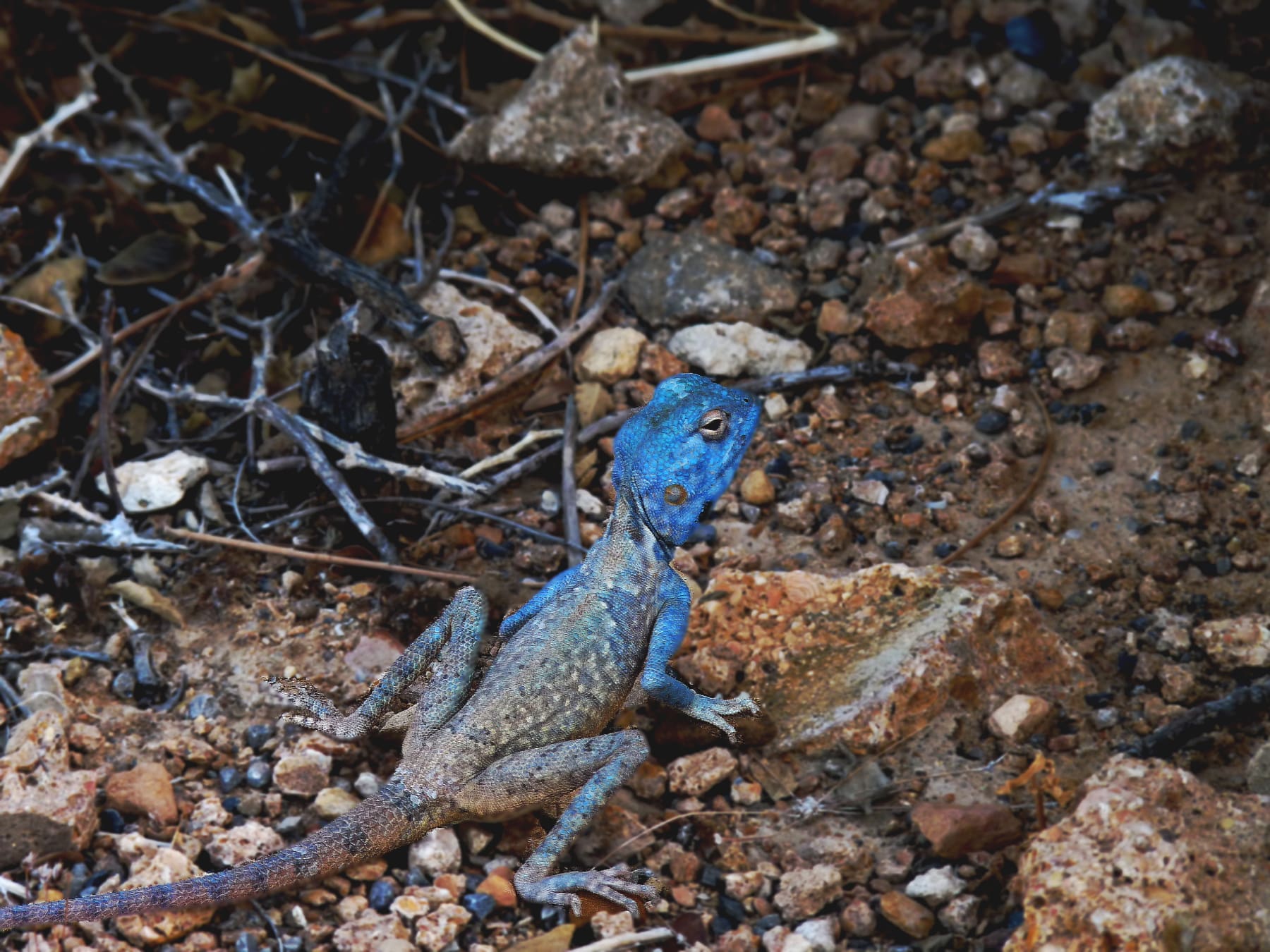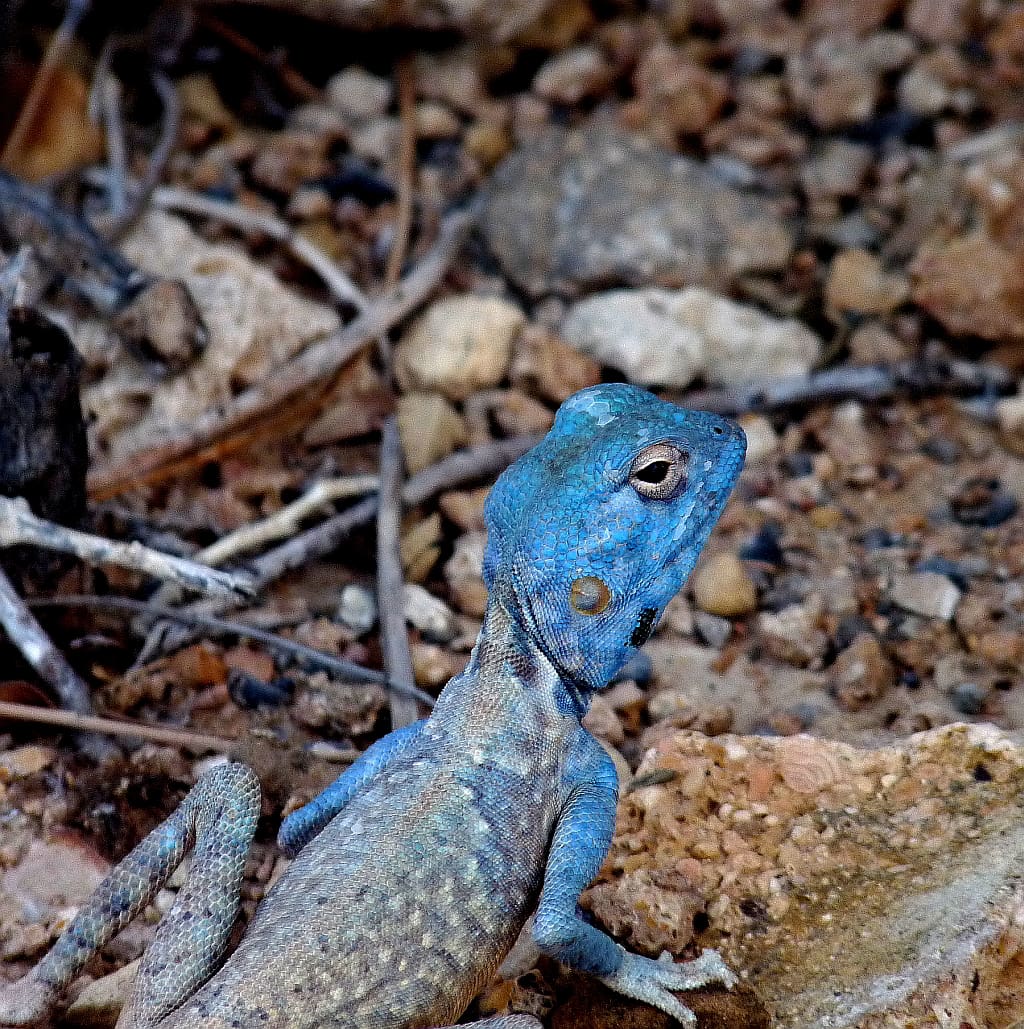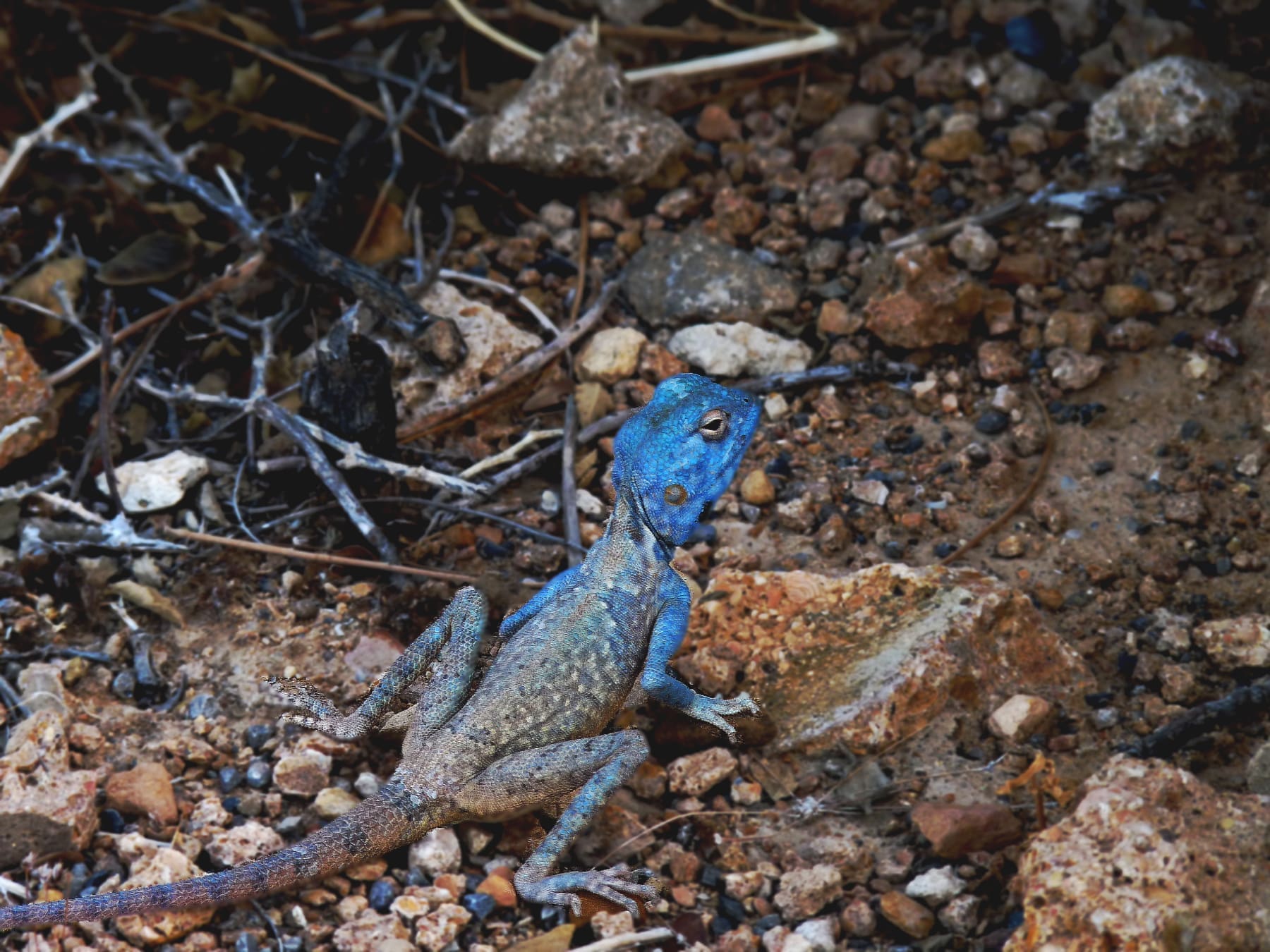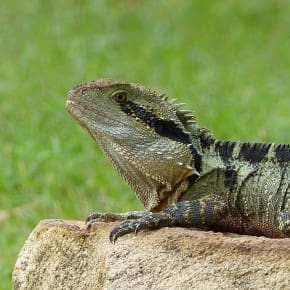
The Sultanate of Oman is a beautiful country in the Arabian peninsula with a great diversity of habitats, but it is not exactly known for its wealth of charismatic large wildlife. Besides the handsome Arabian Oryx, the nation’s mascot, there are few animals that readily jump to mind at the mention of its name. Among carnivores, but for the rare Arabian leopard, the scarcely seen caracal and still-persecuted wolf, there’s little swish and swagger at the top of the food chain. The wildlife lurks out of sight, and underfoot. That’s right, it’s the small, seemingly insignificant creatures that offer epiphanic encounters. For the most part they remain hidden away, but a chance tryst can be a revelation.
So it was with this diminutive reptile, the Sinai Agama (Pseudotrapelus sinaitus), which I encountered in Sur, eastern Oman.
About two hours before sunset on a hot summer evening in August, I was clambering up to the top of a hillock near Al Ayjah watchtower for a better view of the spectacular Khor Al Batah Suspension Bridge, when I spied a little lizard, about six inches long, darting into the potpourri of the desert floor. It was dull brown and speckled, maybe banded. Probably a female or a juvenile. I lost it in the busy visual field of the ground, which was littered with rubble, pebbles, corpses of twigs and grasses, and sundry desiccated vegetation. I took a step forward and the lizard moved again. There were, in fact, three individuals. Two of them, dull brown females or juveniles, vanished out of sight. The third lizard stayed put, cocked its head and peered up at me in the solemn, inquiring, mildly confrontational way that agamid lizards often do. This was a male. He appeared dull, slaty grey but as I watched he changed hue to a deep detergent-blue. Nodding his head and bristling the spiky scales at the crest of his head, his wise eyes fixed on me, he was quite an apparition.
The Sinai Agama is a widely distributed lizard, recorded from most of the Arabian peninsula as well as northern Africa. It is diurnal, and known to be active during the hotter parts of the day. It feeds on insects, chiefly ants, and can be seen foraging actively. The full splendour of the male’s bright colouration can be observed in the breeding season, when ready-to-procreate individuals stake claim to rocks and other vantages to bask and nod their heads to attract females. The nod is also a threat display to challenging males and intruders.
Sinai Agamas are fairly common and not known to be threatened in any part of their range. They form an important prey base of raptors, snakes and desert-dwelling carnivores such as foxes.

As the lizard posed for my picture, his blue blush intensified. Though not as spectacular as in chameleons, the changing of colours in agamid lizards can be dramatic.
Blue is not an unusual colour in lizards. Readers of this blog may have read my earlier post on the Kashmir Rock Agama – the breeding male of this species develops bright slaty-blue limbs. The Fan-throated Lizard (Sitana ponticeriana), which we Ogres have unfortunately not yet encountered, also has a bright blue throat flap.
Greedy as photographers can be, I inched another step forward for a closer shot. The Sinai Agama, showing no signs of being ruffled, simply slipped into a rock crevice and disappeared from my evening. As I clambered up the hillock for a sunset view of Al Batah lagoon, my fellow-travellers asked what had delayed me. I showed them the picture I had taken.
“How do you even find these creatures?” one friend asked.
I don’t. They reveal themselves to me.
ALSO READ
Encounter – The Kashmir Rock Agama
Encounter – Elliot’s Forest Lizard
- TL;DR – Death Stalks Like A Marabou Stork - July 24, 2024
- Dimorphic Egret – Meet this East African mystery bird - June 8, 2024
- Encounter: Northern Treeshrew in Arunachal Pradesh - May 19, 2024



